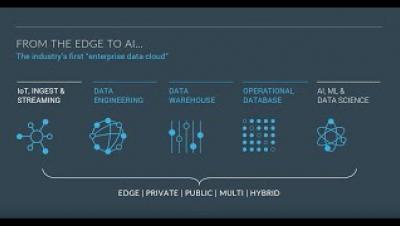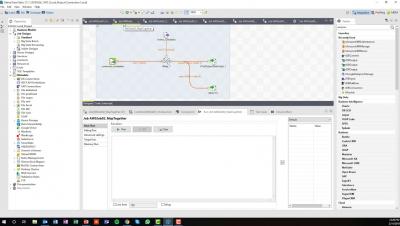Systems | Development | Analytics | API | Testing
Cloud
Microsoft Azure & Talend : 3 Real-World Architectures
We know that data is a key driver of success in today data-driven world. Often, companies struggle to efficiently integrate and process enterprise data for fast and reliable analytics, due to reliance on legacy ETL solutions and data silos. To solve this problem, companies are adopting cloud platforms like Microsoft Azure to modernize their IT infrastructure.
6 Ways to Start Utilizing Machine Learning with Amazon Web Services and Talend
A common perspective that I see amongst software designers and developers is that Machine Learning and Artificial Intelligence (AI) are technologies which are only meant for an elite group. However, if a particular technology is to truly succeed and scale, it should be friendly with the common man (in this case a normal software developer).
All the Ways to Connect Your Azure SQL Data Warehouse with Talend
Azure SQL Data Warehouse (DW) has quickly become one of the most important elements of the Azure Data Services landscape. Customers are flocking to Azure SQL DW to take advantage of its rich functionality, broad availability and ease-of-use. As a result, Talend’s world-class capabilities in data integration, data quality and preparation, and data governance are a natural fit with Azure SQL DW.
How to deploy Talend Jobs as Docker images to Amazon, Azure and Google Cloud registries
Since the release of Talend 7.1 users can build Talend jobs as Docker images and publish them to Docker registries. In this blog post, I am going to run through the steps to publish to the major cloud provider container registries (AWS, Azure and Google Cloud). Before I dig into publishing container images to registries, I am going to remind you the basics of building Talend Jobs in Docker images from Talend Studio as well as point out the difference between a local build and a remote build.
AWS + Talend Technical Introduction and Demo
Data Warehouse Modernization and the Journey to the Cloud
To say that organizations today are facing a complex data landscape is really an understatement. Data exists in on-premises systems and in the cloud; data is used across applications and accessed across departments. Information is being exchanged in ever-growing volumes with customers and business partners. Websites and social media platforms are constantly adding data to the mix.
Spinning up Cloud-scale Analytics is now Even More Compelling with Talend and Microsoft
Today, we're excited to share two announcements that make adopting Microsoft Azure SQL Data Warehouse (ADW) a no-brainer. First, ADW significantly increased the lead over the competition with the new price-performance benchmarks published by GigaOm, showing exponential price-performance improvements over similar solutions.
Multi-Cloud Analytics with Qlik Sense
Last June, we released the first phase of multi-cloud deployment options for Qlik Sense Enterprise – our first in a series of steps in delivering unparalleled flexibility and choice in how you deploy analytics across public and private clouds, and on-premise.
2018 - A Year of Innovations
From augmented intelligence to multi-cloud deployment, here's a look back at our path to innovation in 2018.





